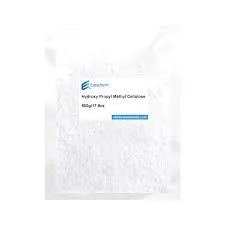
Nov . 20, 2024 20:17 Back to list
is hpmc safe
Is HPMC Safe? Understanding Hydroxypropyl Methylcellulose
Hydroxypropyl Methylcellulose (HPMC) is a commonly used polymer that serves various purposes across numerous industries, including pharmaceuticals, food, cosmetics, and construction. Its versatility stems from its unique properties, such as thickening, emulsifying, and film-forming capabilities. A pressing question that often arises among consumers and manufacturers alike is Is HPMC safe for use?
Understanding HPMC
HPMC is a semi-synthetic polymer derived from cellulose, which is a natural polymer found in plant cell walls. It is produced through a chemical process that modifies cellulose, making it soluble in water. This modification enhances its versatility, allowing HPMC to be employed in a wide range of applications, from acting as a thickener in food products to serving as a binder in pharmaceutical formulations.
Safety Assessments
The safety of HPMC has been assessed in various studies and by numerous regulatory agencies around the world. The U.S. Food and Drug Administration (FDA) has classified HPMC as Generally Recognized as Safe (GRAS) when used in food applications. This designation indicates that HPMC is considered safe for consumption when used in accordance with established guidelines.
Additionally, organizations such as the European Food Safety Authority (EFSA) have conducted rigorous evaluations of HPMC, concluding that it poses no significant health risks when used appropriately. Extensive toxicological tests have demonstrated that HPMC does not show mutagenic, carcinogenic, or reproductive toxicity, further supporting its safety profile.
is hpmc safe

Application in Pharmaceuticals
In the pharmaceutical sector, HPMC is often used as a controlled-release agent, stabilizer, and binder in tablets and capsules. Its safety in these applications has been well-documented. Many medications containing HPMC have been on the market for years with no reported adverse effects linked to the substance.
Moreover, HPMC is frequently utilized in ophthalmic applications, such as artificial tears and eye drops, due to its excellent compatibility with human tissues. It provides moisture retention and lubrication, making it an effective agent for treating dry eyes and other ocular conditions.
Conclusion The Bottom Line
With the rigorous safety evaluations conducted by numerous organizations and its widespread use in various products, HPMC is generally regarded as safe for use across multiple industries. However, as with any substance, individual reactions can vary. Some people may experience allergic reactions or sensitivities, so it is important to monitor any new product containing HPMC and consult with a healthcare professional if adverse effects occur.
In summary, HPMC’s long history of safe usage in food, pharmaceuticals, and cosmetics suggests that it can be confidently used within regulatory limits. Consumers should always read labels and product information to understand the ingredients they are using, and manufacturers should adhere to safety guidelines to ensure the responsible use of HPMC in their products. Whether you are a manufacturer, healthcare provider, or consumer, awareness and education about HPMC are essential in making informed decisions regarding its safety and applications.
-
Versatile Hpmc Uses in Different Industries
NewsJun.19,2025
-
Redispersible Powder's Role in Enhancing Durability of Construction Products
NewsJun.19,2025
-
Hydroxyethyl Cellulose Applications Driving Green Industrial Processes
NewsJun.19,2025
-
Exploring Different Redispersible Polymer Powder
NewsJun.19,2025
-
Choosing the Right Mortar Bonding Agent
NewsJun.19,2025
-
Applications and Significance of China Hpmc in Modern Industries
NewsJun.19,2025







